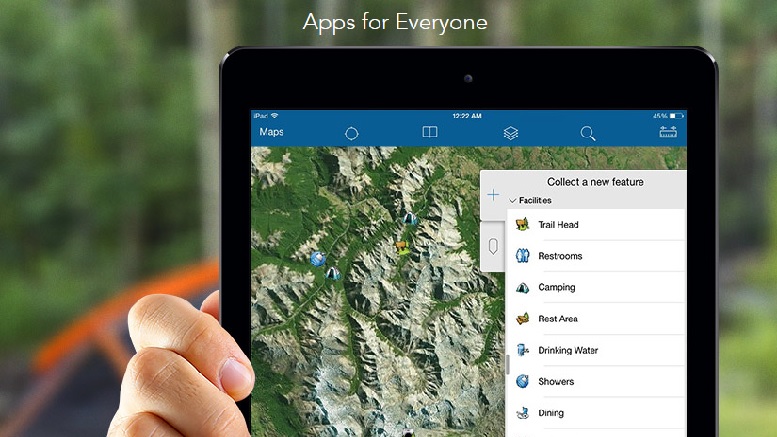Esri ArcGIS Pro stands out as a premier choice for professionals seeking advanced spatial analysis capabilities. With its robust suite of tools and functionalities, ArcGIS Pro offers unmatched precision and efficiency in handling complex geospatial data. The software’s seamless integration with various data sources and formats allows users to perform intricate spatial analyses with ease and accuracy. From sophisticated geoprocessing techniques to interactive 3D visualization, ArcGIS Pro empowers users to explore, analyze, and visualize spatial data like never before. Let’s explore into the features that make Esri ArcGIS Pro stand out in advanced spatial analysis.
Core Functionalities of ArcGIS Pro
Integrated 2D and 3D Capabilities
Your spatial analysis capabilities are greatly enhanced with ArcGIS Pro’s integrated 2D and 3D capabilities. This allows you to seamlessly transition between 2D maps and 3D scenes, providing a more holistic view of your spatial data.
Advanced Spatial Analysis Tools
For advanced spatial analysis, ArcGIS Pro offers a wide range of powerful tools and functionalities. From spatial statistics to suitability modeling, the platform provides the tools you need to perform complex spatial analysis tasks with ease.
- For Spatial Statistics:
Tools Functionality Hot Spot Analysis Detect statistically significant clusters Optimized Hot Spot Analysis Identify spatial outliers
Plus, with tools like Hot Spot Analysis and Optimized Hot Spot Analysis, you can easily detect statistically significant clusters and identify spatial outliers within your data.
Usability and User Experience
Streamlined Workflow and Project Management
User experience is central to Esri ArcGIS Pro’s design, offering a sleek and intuitive interface that enhances productivity. The software’s streamlined workflow and project management tools allow users to seamlessly navigate through complex spatial analysis tasks with ease.
Customization and Extensibility
On top of its user-friendly interface, Esri ArcGIS Pro stands out for its extensive customization and extensibility capabilities. Users can tailor the software to their specific needs by creating custom tools, scripts, and add-ins, enhancing its functionality and adaptability to diverse spatial analysis projects.
A plethora of customization options, including Python scripting and integration with ArcGIS Online, enables users to extend the software’s capabilities beyond its out-of-the-box features. This flexibility empowers users to optimize their workflows and leverage the full potential of advanced spatial analysis techniques.
Data Management and Integration
Support for Various Data Formats
Many advanced spatial analysis projects require working with diverse data formats, and Esri ArcGIS Pro excels in this area by providing robust support for a wide range of formats. From common formats like shapefiles and geodatabases to more specialized formats such as LiDAR and CAD files, ArcGIS Pro makes it easy to seamlessly integrate and manage different types of data.
Real-Time Data Processing and Visualization
Support for real-time data processing and visualization is a key feature that sets Esri ArcGIS Pro apart in advanced spatial analysis. With the ability to connect to real-time data feeds, ArcGIS Pro enables users to visualize and analyze data as it is being collected, providing valuable insights and facilitating immediate decision-making.
With real-time data processing capabilities in ArcGIS Pro, users can set up automated workflows to continuously process incoming data streams, apply spatial analytics in real time, and visualize the results on dynamic maps. This feature is particularly valuable for applications such as emergency response, asset tracking, and monitoring of environmental conditions where timely decision-making is critical.
Collaborative Features and Sharing
Role in Facilitating Team Projects
On An overview of the Spatial Analyst functions—ArcGIS Pro, Esri ArcGIS Pro stands out in advanced spatial analysis due to its collaborative features that streamline teamwork. It allows multiple users to work on the same project simultaneously, fostering efficient collaboration and ensuring real-time updates across the team. This enhances productivity and promotes seamless communication among team members, leading to more effective project outcomes.
Sharing and Publishing Spatial Data Insights
Data insights derived from advanced spatial analysis in Esri ArcGIS Pro can be easily shared and published, making it a powerful tool for knowledge dissemination. With just a few clicks, users can create visually compelling maps, charts, and reports that communicate complex spatial information in a digestible format. This capability not only enhances data sharing within teams but also enables organizations to effectively communicate their findings to stakeholders and the public, facilitating informed decision-making processes.
Sharing and publishing spatial data insights is crucial for maximizing the impact of spatial analysis and driving actionable outcomes. By leveraging Esri ArcGIS Pro’s intuitive sharing features, users can distribute their findings efficiently, enabling stakeholders to access valuable spatial information and make data-driven decisions. This streamlined process enhances collaboration, promotes transparency, and empowers organizations to harness the power of spatial analysis for informed decision-making.
Extending ArcGIS Pro Capabilities
The Use of Python and ArcPy
One of the key strengths of ArcGIS Pro is its seamless integration with Python scripting and the ArcPy site package. This allows users to automate complex geoprocessing tasks, create custom tools, and streamline workflows. Python scripting empowers users to extend the functionality of ArcGIS Pro beyond its out-of-the-box capabilities, making it a powerful tool for advanced spatial analysis.
Integration with Other Esri Products and Services
Python scripting in ArcGIS Pro also facilitates integration with other Esri products and services, such as ArcGIS Online, ArcGIS Server, and ArcGIS Enterprise. This interoperability allows users to leverage a wide range of Esri resources to enhance their spatial analysis projects. With seamless connectivity and data sharing between ArcGIS Pro and other Esri platforms, users can access updated data, share maps and analytical results, and collaborate more effectively.
ArcPy, the Python site package for ArcGIS, further enhances integration with other Esri products and services by providing a robust library of geoprocessing tools. These tools are specifically designed for automating workflows, accessing spatial data, and interacting with various Esri software components. By leveraging ArcPy in ArcGIS Pro, users can unlock a wealth of functionalities and truly maximize the capabilities of Esri’s suite of spatial analysis tools.
Comparing ArcGIS Pro to Other Platforms
| ArcGIS Pro | Other Platforms |
| New and modern interface | Traditional interfaces that may be outdated |
| Performance improvements | May lack advanced spatial analysis tools |
| Seamless integration with other Esri products | Compatibility issues with non-Esri software |
Performance Enhancements over ArcMap
Platforms have noted significant improvements in performance when using ArcGIS Pro compared to its predecessor, ArcMap. The newer software operates more efficiently, especially when handling large datasets and complex spatial analyses. Users can experience faster processing speeds and smoother workflows, making it the go-to choice for advanced spatial analysis tasks.
Competitive Advantages in the GIS Arena
The competitive advantages of ArcGIS Pro in the GIS arena are notable. With its cutting-edge features, superior capabilities, and user-friendly interface, ArcGIS Pro stands out among other GIS platforms. Its comprehensive toolbox, modern design, and robust analytical tools give professionals the edge they need to tackle complex spatial challenges effectively.
Competitive
In addition to its performance improvements, ArcGIS Pro boasts a range of competitive advantages that set it apart in the GIS arena. Its seamless integration with other Esri products, advanced spatial analysis capabilities, and dynamic visualization tools make it a powerful choice for professionals looking to take their spatial analysis to the next level.
Summing up
Taking this into account, Esri ArcGIS Pro stands out in advanced spatial analysis due to its extensive capabilities in data manipulation, visualization, and modeling. Its user-friendly interface, integrated tools, and compatibility with various data formats make it a top choice for professionals in the GIS field. With its advanced features like 3D visualization, spatial statistics, and machine learning integration, ArcGIS Pro offers a comprehensive solution for complex spatial analysis tasks. By constantly updating and improving its functionality, ArcGIS Pro remains at the forefront of the industry, setting itself apart as a powerful tool for advanced spatial analysis.






Be the first to comment on "What Sets Esri ArcGIS Pro Apart In Advanced Spatial Analysis?"